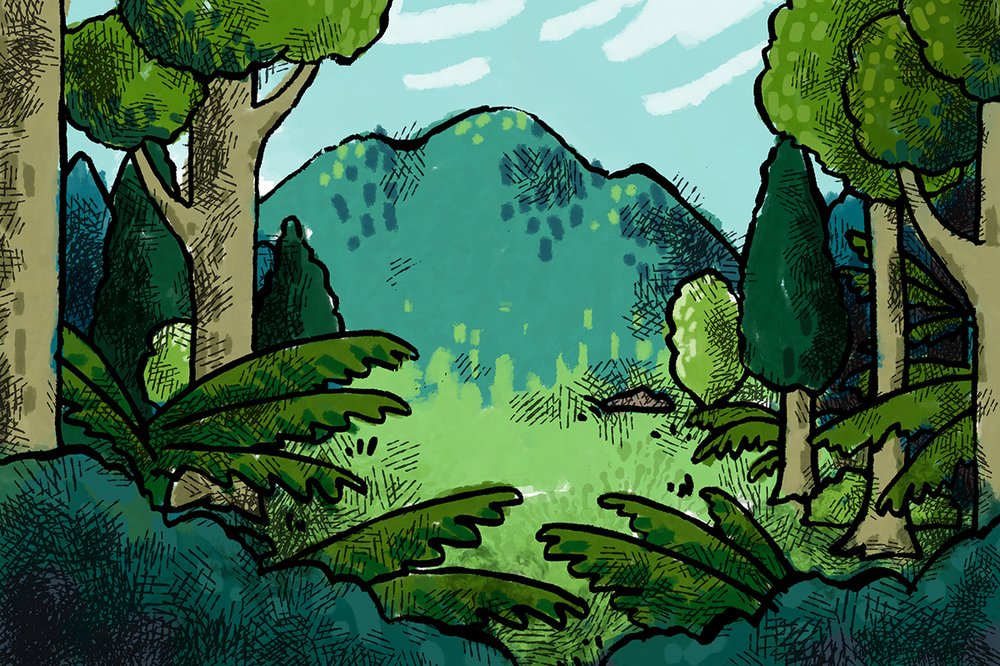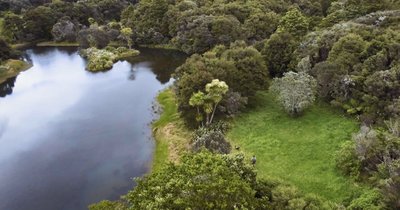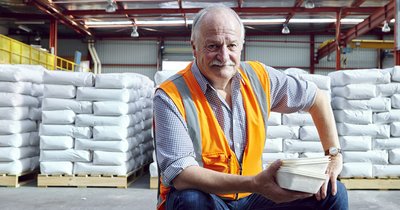Once overrun by introduced predators, Waikato’s Maungatautari mountain has been transformed into New Zealand’s largest mainland fenced sanctuary. The sanctuary’s success is due to the passion, commitment and hard work of local people like Ally Tairi, winner of a Kiwibank Local Hero Award.
Ten years ago, says Ally Tairi, you could walk through the ancient bush on Maungatautari in the Waikato and you’d be lucky to even hear a bird, let alone see one.
Now people come from all over the world to listen to the mountain’s dawn chorus.
Visitors can watch hihi (stitchbird) feeding, catch a glimpse of a takahē, see a tuatara up close and discover many other species of rare and endangered native wildlife.
Half an hour’s drive from Cambridge, Sanctuary Mountain Maungatautari – known affectionately by locals as ‘the maunga’ – is New Zealand’s largest mainland fenced sanctuary. Previously overrun by deer, goats, pigs and possums, the eco refuge owes its success to an extraordinary community effort by local people like Ally.
“I used to play on the mountain when I was a kid. I can still remember when a cousin with the same initials as me carved his initials on the trig station and I got blamed for it,” says Ali.
“So this place is very close to my heart. I’ve lived and breathed the journey we’ve all been through to see it become what it is today.”
One of New Zealand’s most ambitious conservation projects, Sanctuary Mountain Maungatautari was the brainchild of local farmer David Wallace.
Ally’s hapū tasked her and her cousin Peter with finding out what the impact of the proposed sanctuary would have on them and on the Tainui iwi – she says there aren’t many whānau within Tainui who don’t affiliate with Maungatautari somewhere in their whakapapa.
Ally was sceptical about the feasibility of David’s plan until she saw the pest-proof fence he erected on his farm in 1999.
“It was only then that I suddenly thought, ‘Jeepers - this might just work!’”
Another driving force was the promised ‘partnership’ between Māori (local hapu, Ngāti Koroki-Kahukura and Tainui) and Pakeha (the Crown, with Waipa District Council as its agent, and Maungatautari Ecological Island Trust).
Ally became a foundation member of the sanctuary and was heavily involved in the lengthy and complex consultation process required to gain support for the project from landowners and local people.
She set up a database of everyone who owned the land on the mountain, which included some whānau who didn’t even know they were landowners. “Both my parents are from Maungatautari. I was motivated by my heritage – that’s what drove us all,” she says.
In 2004, the 3400-hectare mountain was ringed by a three-metre high, 47km pest-free fence – the longest in the world. Introduced predators such as rats, possums, weasels and ferrets were eradicated by poison, trapping and hunting.
Ally helped create the sanctuary’s over-the-mountain pest monitoring programme and has been its volunteer coordinator since 2005. She manages about 450 volunteers who maintain tracks and tracking lines, monitor wildlife and keep weeds under control.
Volunteers range from retired university lecturers to local schoolchildren. “The volunteers love the bush, they enjoy the comradery and they are all conservationists,” says Ally.
“We’ve had volunteers who have been with us for ten years plus. They only leave when they move away or can’t do it anymore. They are generous to a fault and they love the mountain and that’s why I love working with them.”
The maunga is now home to 12 species of native bird, including the kaka, brown kiwi, kākāriki and kōkako.
Many of the birds have been translocated from other parts of the country. Kiwis were among the first new inhabitants to be brought into the predator free zone. Tainui representatives went to the Tongariro region to collect the kiwi, promising the local Ngāti Tūwharetoa iwi that they would look after the birds forever.
Ally instigated the process, which was modelled on a Māori marriage custom: when a man wanted to marry outside his iwi, iwi representatives would visit the bride’s iwi and promise to look after her for the rest of her life. If the bride’s iwi gave its consent, the agreement between the two iwi was binding.
“We’ve now used that process with all our translocations, from takahē to tuatara, and it’s probably set a precedent within Māoridom for all future translocations. I’m very proud of that,” says Ally.
Ally’s commitment to the sanctuary now been recognised with a Kiwibank Local Hero Award, which acknowledges everyday people doing extraordinary things in their local communities. The national Kiwibank Local Hero award, will be announced in February as part of the Kiwibank New Zealander of the Year Awards
Even a double hip replacement hasn’t kept Ally away from her work at the maunga, although being on crutches means she hasn’t been able to stray far from the sanctuary’s office.
“I can’t wait to be able to get into the bush again,” she says. “For me, that’s my time out to relax.”
The Kiwibank Local Hero Medals and the New Zealander of the Year Awards celebrate those people who use their passion for New Zealand to make our country a better place. These awards are an opportunity for New Zealanders to honour extraordinary Kiwis whose selflessness, creativity, and vision make us proud to call New Zealand home. Find out more about the New Zealander of the Year Award winners and those in the running for 2018.



